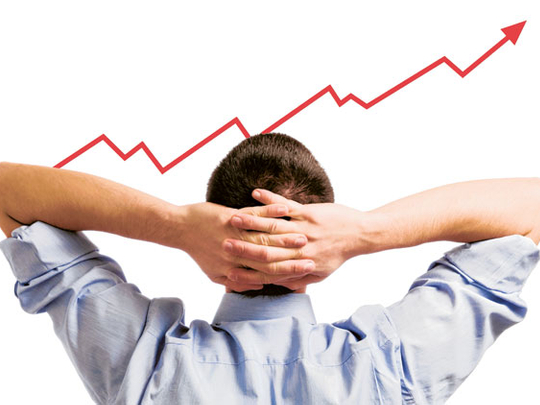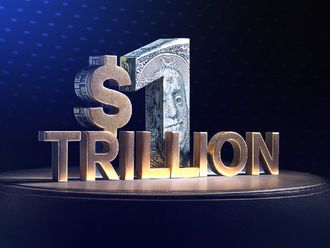
The whole idea of pegging a currency to the dollar was to bring stability to the economies of small countries. Small countries are buffeted by global economics more than large economies, a fact underlined by the old maxim: "When America sneezes, the world catches a cold."
With this in mind, the dollar has been a replacement for the gold standard around the world for over two generations.
The US is the world's biggest trading partner. It makes sense for the currencies of smaller economies to track that of their biggest customer. Especially when you are the producer of a raw material like oil, denominated in US dollars.
Pegging a currency to the dollar is a smart move — at least it is in "normal" times. Those times, however, increasingly look to have changed. Economic perception and economic reality are not necessarily the same. On the surface you would think the US is brilliant at business and commerce. It is the biggest economy, after all. However, the numbers do not agree.
In the game of world commerce, the US is a big loser. Despite being the breeding ground for companies like Coca-Cola, Nike, Microsoft — producing an endless list of products from a veritable pantheon of commercial giants — the US is simply hopeless at world trade.
For all its swagger and bravado, the US loses the money game to the tune of $500 billion (Dh1.83 trillion) a year, roughly $5,000 per family.The financial final score between the US and the world places the US's trade skills on the same par as its soccer. The fact the US does a lot of trade doesn't mean it is not losing on the deal — by a massive amount of money.
Competitive level
In the normal course of economics, the dollar would fall to a level where the US became competitive. Yet with so many countries — particularly important trading partners — pinning their currency to the dollar, the dollar can't fall so easily. In addition to this, the US deficit is so vast, the country must protect the dollar's value to maintain its ability to borrow, thus funding its other massive deficit, i.e. its government spending.
Ironically, a lot of this cash comes from the same countries that sell "Uncle Sam" so much stuff. It's an insane economic loop on the edge of breaking down. All this leaves America in a jam, as well as the countries pegging their economies to its currency.
Obviously, a country with a peg set to low, like China, enjoys great trading terms with the US.
Of course, such imbalances can't go on forever. In Europe and the US large econ-omic cracks are opening as economies become hollowed out and fragile. It's no accident that Germany — a country with a big trade surplus — is the only "haven" in Europe. When you have a positive trade balance, you can use the money you win from trade to keep your national debt in line. However, when you have a trade deficit you must liquidate your assets through taxation and privatisation.
So what is an investor to do? The key call is trying to predict what is going to happen next. The road ahead is forked: inflation or deflation. If you believe in deflation, you believe the US will cut off world trade, slash its budgets, raise interest rates and go into a 1930s style period of austerity. The dollar will go up and the world will stop spinning. Cash would be king in this environment.
Yet this isn't the natural course for America, or, for that matter, governments in general, be they democracies or otherwise. The most likely course the US and Europe will take leads up the road of inflation.
Clem Chambers is CEO of ADVFN, a European and South American financial information website, and author of 101 Ways To Pick Stock Market Winners.












